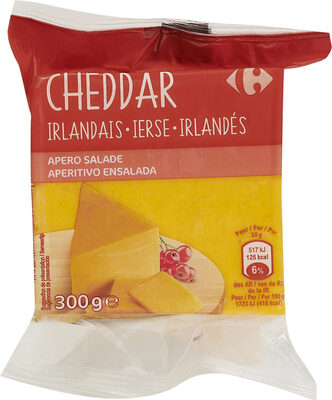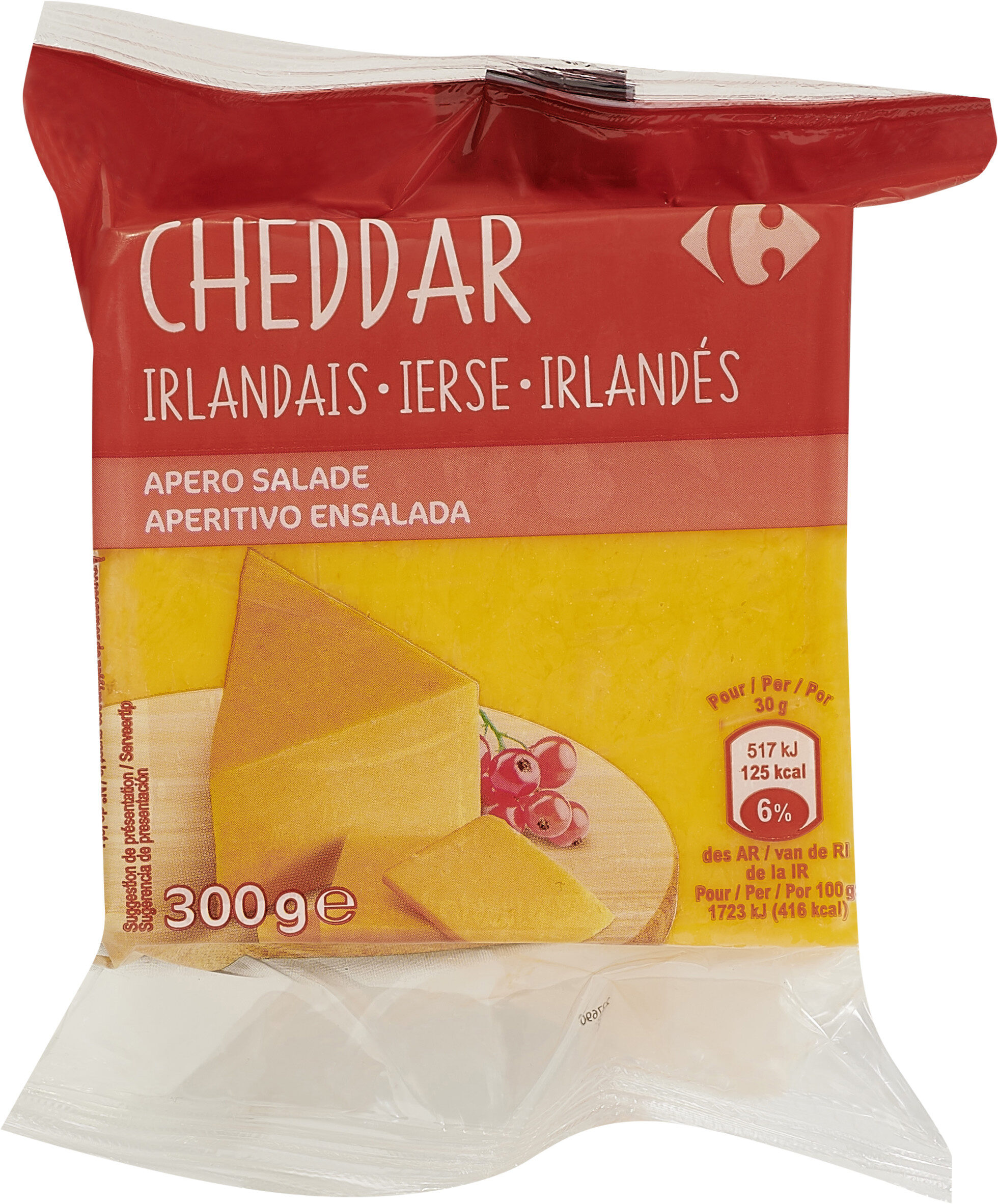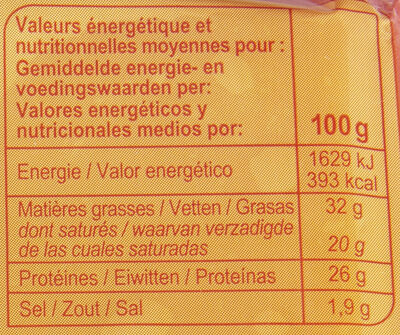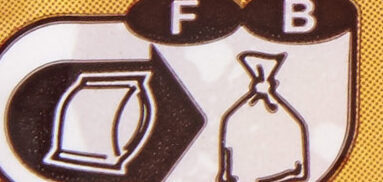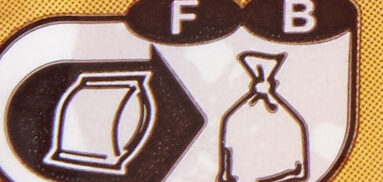Cheddar Irlandais - Carrefour - 300 g
This product page is not complete. You can help to complete it by editing it and adding more data from the photos we have, or by taking more photos using the app for Android or iPhone/iPad. Thank you!
×
Some of the data for this product has been provided directly by the manufacturer Carrefour.
Barcode: 3560070251216 (EAN / EAN-13)
Common name: Cheddar en bloc - Fromage à pâte pressée non cuite.
Quantity: 300 g
Brands: Carrefour
Categories: Dairies, Fermented foods, Fermented milk products, Cheeses, Cow cheeses, Cheeses from the United Kingdom, Cheeses from England, Cheddar cheese, Cheeses from Northern Ireland, Mild cheddar
Origin of ingredients: Ireland
Manufacturing or processing places: Irlande
Traceability code: BE CO 021 EC, NL Z0187 EG
Stores: Carrefour, carrefour.fr
Matching with your preferences
Other information
Conservation conditions: À consommer de préférence avant le : voir au dos du film. À conserver entre +1°C et +7°C. À consommer dans les 5 jours après ouverture. Conditionné sous atmosphère protectrice.
Customer service: Interdis - TSA 91431 - 91343 MASSY Cedex - France
Report a problem
Data sources
Product added on by kiliweb
Last edit of product page on by org-carrefour.
Product page also edited by chevalstar, driveoff, openfoodfacts-contributors, quechoisir, roboto-app, teolemon, yuka.AIpDFd6EM_w8B9yL6YQQjTeZML3jL_VABH4Kog, yuka.DOBjDICkQ-woBfSC1J5v9WaSROrMBcUGJVsTog, yuka.WTYwcUVKMGZ0TWNBdmNZMzJVbkY4TTU2eksrblQxNk5jT2dNSVE9PQ.
